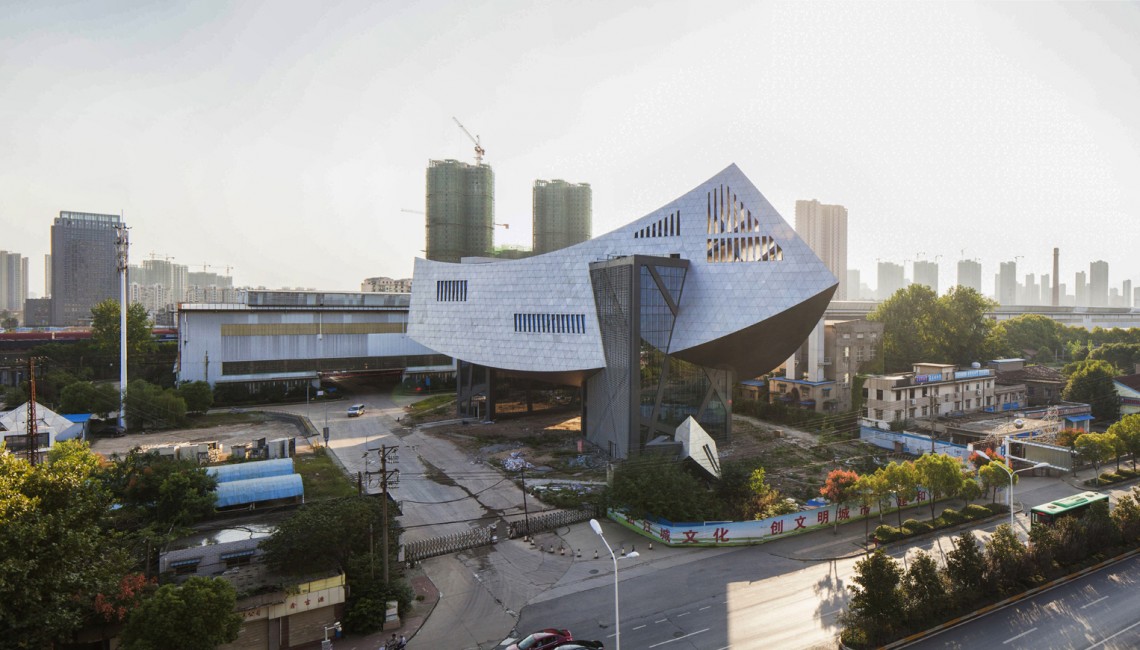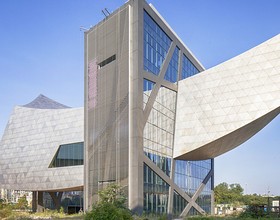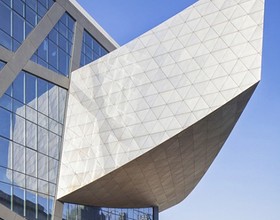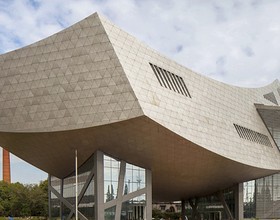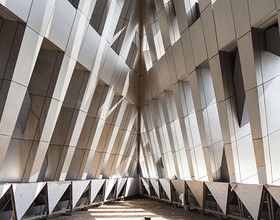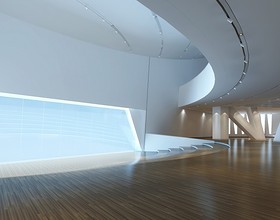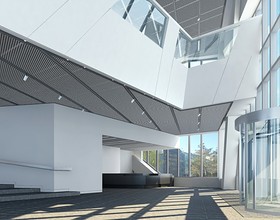ZHANG ZHIDONG AND MODERN INDUSTRIAL MUSEUM
-
Located in the steelmaking capital of eastern China,the Zhang Zhidong and Modern Industrial Museum, was designed to balance three narrative themes within an integrated building and landscape.
The three themes, each of which have a dedicated floor, are: the life of Zhang Zhidong, a 19th-century leader in government who inspired the movement towards modernization that established the steel industry in Wuhan; the steel industry; and the history of the city of Wuhan.
At the turn of the 20th century, all the railroads in China converged in Wuhan, connecting the city to all the provinces, and in 1911, the Xinhai Revolution crystallized the move toward modernization jumpstarted by Zhang Zhidong and carried forward by modern industry.
Studio Libeskind conceived the museum as a steel-clad, curved arc sweeping upward in space. The arc is suspended by two steel and glass footings, which provide space for entrance lobby, main stairs, museum store and administration.
From the top, the visitor has a view of Wuhan; from each floor, a view toward a garden designed of radiating lines and rings, connecting past and future. The museum floor plans and the garden reflect the spherical geometry of the building’s primary form.
Photo credits: Alex Chan, Studio Libeskind
1870 Projects

